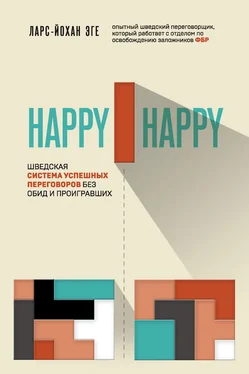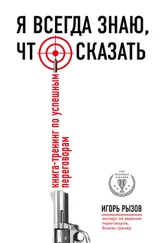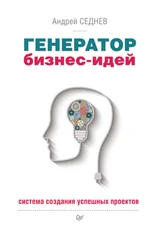Bazerman, M. H. (1983). Negotiator judgment: A critical look at the rationality assumption. American Behavioral Scientist, Vol. 27, pp. 618–634.
Menkel-Meadow, C., Schneider, A. K., Love, L. P., (2005), Negotiation – Processes for Problem Solving, New York: Aspen Publishers.
Åge, L.-J., & Eklinder-Frick, J. (2017) “Goal-oriented balancing: Happy—Happy negotiations beyond win—win situations”, Journal of Business & Industrial Marketing, Vol. 32 No. 4, pp. 525–534.
Rizatto, Matteo. (2014), I am Your Mirror: Mirror Neurons and Empathy, Torino: Blossoming Books.
Исследователь зеркальных нейронов Кристиан Кайзер часто показывает на своих лекциях отрывок из фильма про Джеймса Бонда «Доктор Кто». Он демонстрирует сцену, где большой паук, медленно забирается на руку Шона Коннери, лежащего на кровати. Большинство людей, смотрящих этот эпизод, ощущают явные признаки дискомфорта.
Galinsky, A. D., Maddux, W. W., Gilin, D., & White, J. B. (2008). Why it pays to get inside the head of your opponent: The differential effects of perspective taking and empathy in negotiations. Psychological Science, Vol. 19, pp. 378–384.
Carnevale, P. J., & Isen, A. M. (1986), The influence of positive affect and visual access on the discovery of integrative solutions in bilateral negotiation. Organizational Behavior and Human Decision Processes, Vol. 37, pp. 1–13.
Fredrickson, B.L. (2001), The role of positive emotions in positive psychology. The broaden-and-build theory of positive emotions, American Psychology, Vol. 56, No. 3, pp. 218–226.
Fredrickson, B. L., Positivity. Groundbreaking Research to Release Your Inner Optimist and Thrive, London: Oneworld Publications.
Gasper, K., & Clore, C. L. (2002), Attending to the big picture: mood and global versus local processing of visual information. Psychology Science. Jan, Vol. 13 No. 1: pp. 34–40.
Yang, M.-Y., Cheng, & F.-C., Cuang, A. (2015), The role of affects in conflict frames and conflict management, International Journal of Conflict, Vol. 26, No. 4, pp. 427–449.
Hess, U., & Blairy, S. (2001), Facial mimicry and emotional contagion to dynamic facial expression and their influence on decoding accuracy, International Journal of Psychology, Vol. 40, pp. 129–141.
Isen, A. M. (2001), An influence of positive affect on decision making situations: theoretical issues with practical implications, Journal of consumer Psychology, Vol. 11, No. 2, pp. 75–85.
Fredrickson B. L. (1998), What good are positive emotions? Review of General Psychology, Sept. Vol 2, pp. 300–319.
Исследования в области питания и здоровья показывают, что наша печень производит глюкозу из еды, и так называемые кетоновые тела могут выполнять те же функции, что и глюкоза. Я не буду вдаваться в подробности, поскольку чтобы этого добиться, необходимы долгосрочные и всеобъемлющие изменения в рационе питания.
В этой главе речь идет об улучшении настроения в определенной ситуации в кратчайшие сроки. Если вы хотите пребывать в хорошем расположении духа более длительный период, помочь вам может Барбара Фредриксон, которая провела исследования, показавшие, что медитация любви и добра является хорошим способом для достижения желаемого. Постепенно ваше состояние и настроение улучшатся.
Talarovicova, A., Krskova, L., & Kiss A. (2007), Some assessments of the amygdala role in suprahypothalamic neuroendocrine regulation: a mini review. Endocrine Regulations. Nov, Vol. 41, No. 4, pp. 155–162.
В Университете штата Уэйн у двух психологов возникла другая мысль: можно ли определить, насколько долго проживет спортсмен, изучая его фото на коллекционной карточке. Изучив 230 бейсбольных карточек 1952 года, исследователи смогли убедиться, что игроки, искренне улыбающиеся с фотокарточки, прожили в среднем на семь лет дольше, чем те, кто не улыбался.
Strack, F., Martin, L. L. & Stepper, S. (1988). Inhibiting and facilitating conditions of the human smile: A nonobtrusive test of the facial feedback hypothesis. Journal of Personality and Social Psychology, Vol. 54, No. 5, pp. 768–777.
Allred, K., Mallozzi, J. S., Matsui, F., Raia, C. P., (1997). The Influence of Anger and Compassion on Negotiation Performance, Organiational Behavior and Human Processes, Vol. 70, No. 3, pp. 175–187.
Ross, L. (1995). Reactive devaluation in negotiation and conflict resolution. In Barriers to conflict resolution, New York: Norton.
Lieberman, M. D., Eisenberger, N. I., Crockett, M. J., Tom, S. M., Pfeifer, J. H., & Way, B. M., (2007), Putting Feelings into Words: Affect Labeling Disrupts Amygdala Activity in Respons to Affective Stimuli, Psychological Science, Vol. 18, No. 5, pp. 421–428.
Hölzel, B., Hoge, E. A., Greve, D. N., Gard, T., Creswell, J. D., Warren Brown, K., Feldman Barrett, L., Schwartz, C., Vaitl, D., Lazar, S. W., (2013), Neural Mechanisms of Symptom Improvements in Generalized Anxiety Disorder Following Mindfulness, NeuroImage: Clinical, pp. 448–458.
Agndal, H., Age, L.-J. & Eklinder-Frick, J. (2017), Two decades of business negotiation research: an overview and suggestions for future studies, Journal of Business & Industrial Marketing, Vol. 32, No. 4, pp. 487–504.
Fisher, R., Patton, B., & Ury, W. (2011). Getting to yes: Negotiating agreement without giving in (Rev. ed.). New York: Penguin Books.
Rackham, N., (1972), The effective Negotiator part 2: Planning for Negotiations. Journal of European Industrial training, Vol. 2, No. 7, pp. 2–5.
Если мы сталкиваемся с «реальным» подростком, мы оказываемся в ситуации, напоминающей ситуацию с заложниками: мы, взрослые, должны стоять, как и полиция, за здравый смысл и брать на себя ответственность за обе стороны в дискуссии. Подробнее об этом вы можете прочитать в главе «Абсолютное счастье дома».
Читать дальше
Конец ознакомительного отрывка
Купить книгу












